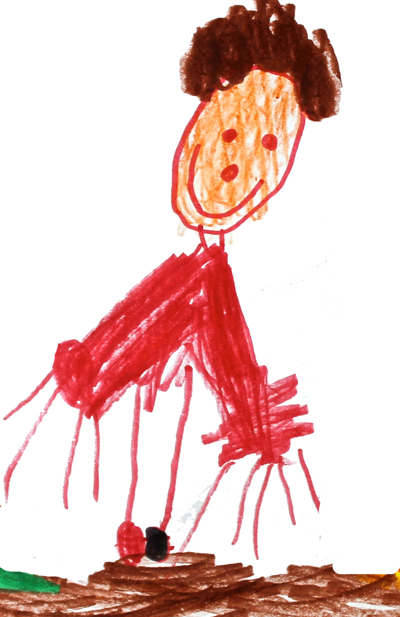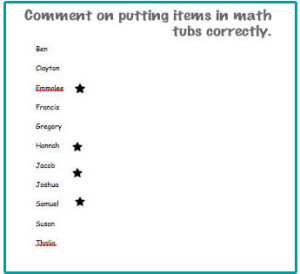When I first started teaching, I found an old book, published by a grade one teacher in the 1950s.
I don’t remember the title of the book or the author’s name but I do remember that it was double spaced, rare for a book back then, and I also remember being impressed by a simple classroom management tip she recommended.
The teacher said she kept a checklist of student names on her desk and every time she said something positive to a child, she put a check by his or her name.
This way, each child received encouraging attention on a consistent basis and the quieter children were not overlooked.

Taking it one step further
As my intentions were to have a peaceful classroom environment and to connect with my students, I gave it a try.
It can be difficult, especially with a larger class, to discover who your students really are, and to help each one feel valued and heard. The more boisterous or needy kids demand your attention and it is easy to spend the majority of your time with them.
As items easily got lost on my desk, I posted a clipboard with new list of student names and a checklist, in an area of the classroom that I passed by often. I replaced the list every day and put the dated, completed lists at the back of the clipboard for reference.
A quick visual aid
Each day, with a quick glance, I could quickly see which students I had interacted with and which ones I hadn’t. I taught myself to look at the list regularly throughout the day.
Each time I chatted with a child individually, made eye contact, responded to them with active and/or reflective listening (not correcting) I would put a check mark by their name. In every way I could, I helped each child to feel valued by giving her/him moments of my time. If another student tried to interrupt, I put my hand out flat in front of them (a hand signal taught early in the year), which meant, “wait”.
Some weeks I chose a topic, such as, “Tell me about one of your favorite games”, and interviewed each child. The chart worked well and I liked its simplicity, ease of implementation, and how it was a visual reminder for me each day to pay attention to specific students.
Check Lists With a Student Task Focus = Fail
Earlier in my career, I tried the type of large commercial poster checklists that require a teacher to put a star by a student’s name when the child completed a task correctly. These efforts always left a negative atmosphere in the classroom.
The same children consistently had a long row of stars and others consistently had few or none. Instead of the above method, I tried something new. When I wanted the children to learn a new activity, such as placing items into tubs when cleaning up (instead of throwing them in!) I would do the following:
- Put up a weekly checklist for myself (see below), with a reminder of the checklist’s purpose
- Demonstrate the task to the children
- Make comments throughout the week as each child practiced the correct actions
- Commenting on the child (Susan is so wonderful) results in a competitive feeling in the room.
- Commenting on the action (Thanks for placing the blocks in the bucket carefully, Susan) results in other children noticing the behaviour and imitating it.
- Record on my checklist each time I commented to a child for doing the task correctly
Focusing on acts of kindness
One week I focused on encouraging the children to be kind to each other. I wrote acts of kindness as the focus of my list and each time I commented on a student’s kind actions, I put a check mark by his/her name on my list.
This forced me to watch the children who did not have a check mark until I saw even the tiniest act of kindness from them. As the children heard me comment on their actions their attention focused on repeating the kind actions and they received clarity about what it means to perform an act of kindness.
Example, “Class, did you notice how Peter helped John wash his paint brushes? That was an act of kindness. Thank you Peter.”
Classroom management methods that develop a positive classroom atmosphere take time. Training children to be successful with new skills, routines and rules takes practice not only for the kids but for the teacher as well.

